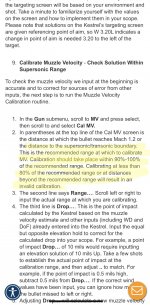So i watched the Hornady podcast on their 4 DOF calculator. Based on what they are saying theirs uses significantly more computational power and in theory should be better. If that is the case why does Applied Ballistics seem to dominate it in the market place. To my knowledge Applied Ballistics is integrated with Kestrel, Leica, Sig, Vortex Wilcox, M.A.R.S and probably others. I think Hornady DOF is only is integrated with Kestrel.
With all of the marketing resources/$$ of Hornady why aren't they integrated with more products?
Also which is actually better? On the hide we see crazy extensive optics reviews with every nuance of subjective evaluations of glass ect but to my knowledge i have not seen someone line up AB vs Hornady at 1000 plus yards and see which is more accurate to their weapon system. Even if you don't shoot it i haven't seen much comparison between the outputs of the 2 solvers at ELR distances where differences arise and who's might be better.
It seems to me if Hornady was stastically better we would see guys at nightforce challenge or king of 2 miles seeing it differentiating itself from other solvers.
Thoughts?
With all of the marketing resources/$$ of Hornady why aren't they integrated with more products?
Also which is actually better? On the hide we see crazy extensive optics reviews with every nuance of subjective evaluations of glass ect but to my knowledge i have not seen someone line up AB vs Hornady at 1000 plus yards and see which is more accurate to their weapon system. Even if you don't shoot it i haven't seen much comparison between the outputs of the 2 solvers at ELR distances where differences arise and who's might be better.
It seems to me if Hornady was stastically better we would see guys at nightforce challenge or king of 2 miles seeing it differentiating itself from other solvers.
Thoughts?




